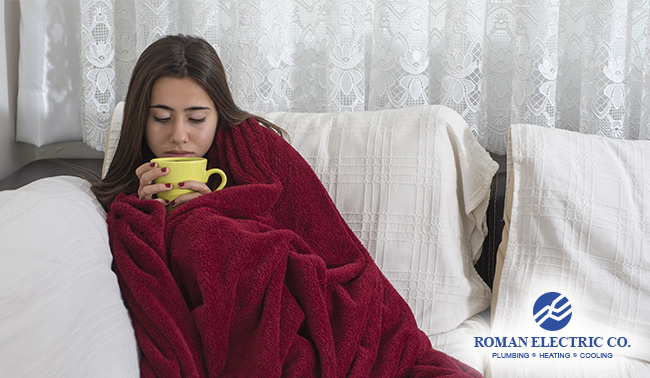Cold spots are the pesky areas of your home that never seem to get warm. What’s that about anyway? Why isn’t your furnace heating up your entire home?
One or more occurrences could be the cause of the cold spots in your home, and it’s in understanding the origin of those cold spots that you can eliminate them altogether.
Here’s how to avoid cold spots in your home this fall and winter:
Make Sure Your Vents Are Open
A cold “spot” might even be an entire room as far as you’re concerned! It feels like every time you go into the den, you have to wrap yourself in one of the throw blankets. Should you have to bundle up in your own home? We don’t think so!
The cause of a cold room or large area (in an open floorplan) might be that your vents are closed or blocked. There’s a little lever on the side of your vent that allows you to open or close it. Switch it to the other direction and see if you feel air pouring out of it more steadily.
It may be that you’re having a hard time locating your air vents at all. That probably means you have a piece of furniture blocking it. Pull all furniture away from the air vents to ensure that warm air can get to the rest of the room.
Replace Your AC Filter
Believe it or not, this little thing really does a lot. Your AC filter not only helps improve your home’s indoor air quality, but it also enables your central air to flow freely—assuming it’s clean, of course! A dirty air filter might be to blame for your home’s cold spots, so be sure to change it out every month or every three months.
Check to See If You Have an Air Leak
Your furnace can work as hard as it can, but if you have an air leak, then there’s nothing your furnace can do to stop cold spots from forming in your home. An air leak is a crack in your home that leads to the outside, letting your temperature-controlled air out and the cold, fall air in.
Go around your home and feel for breezes coming from your windows, doors, and even exterior walls. You might be surprised where you can find a leak! From there, you have a wall crack sealed, have your windows re-caulked, and your doors’ weather stripping replaced.
Change Your Thermostat—or Your Thermostat’s Location
You could have cold spots in your home because your thermostat is a poor communicator. What we mean is: It might not be telling your furnace to raise your home’s temperature in the right way. In this case, you’ll need to have your thermostat inspected by a professional to make sure it’s working—and have it replaced if it’s not!
The problem could be that your thermostat isn’t in the right location. If it’s not level or if it’s near a heat source or an air leak, then you’re going to have inaccurate temperature readings. It might not be your thermostat’s fault that it’s a poor communicator; it could just be a product of its environment.
Schedule a Furnace Inspection with Roman Electric
There’s always the concern, of course, that your furnace is the reason you have cold spots in your home. Your HVAC unit might even be the wrong size for your home, and that can cause a lot of problems in an of itself. To avoid cold spots in your home, call Roman Electric for a furnace inspection. They’ll see if your furnace needs to be repaired or if it should be replaced with newer model.

